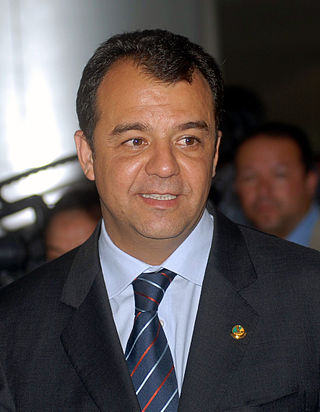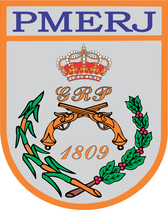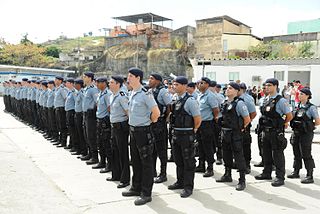
Favela is an umbrella name for several types of working-class neighborhoods in Brazil. The term, which means slum or ghetto, was first used in the Slum of Providência in the center of Rio de Janeiro in the late 19th century, which was built by soldiers who had lived under the favela trees in Bahia and had nowhere to live following the Canudos War. Some of the first settlements were called bairros africanos. Over the years, many former enslaved Africans moved in. Even before the first favela came into being, poor citizens were pushed away from the city and forced to live in the far suburbs.

Rocinha is the largest favela in Brazil, located in Rio de Janeiro's South Zone between the districts of São Conrado and Gávea. Rocinha is built on a steep hillside overlooking Rio de Janeiro, and is located about one kilometre from a nearby beach. Most of the favela is on a very steep hill, with many trees surrounding it. Around 200,000 people live in Rocinha, making it the most populous favela in Brazil.

Jacarezinho is a Brazilian neighborhood and also a favela with more than 60,300 residents living in an area of 40 ha. The place is located in the North Zone of Rio de Janeiro city, and it borders the neighborhoods of Jacaré, Méier, Engenho Novo and Triagem. It is the third largest favela in Rio de Janeiro, only behind Rocinha and Complexo do Alemão. The favela expanded along with the city's industrialization, and it became the biggest favela in Rio de Janeiro by the mid-20th century, with a population of 23,000 in 1960. The crucial element in its growth was the industrial boom in the nearby Méier district after World War II, according to historian Julio Cesar Pino, author of a book about the favelas of Rio de Janeiro.

Anthony William Matheus de Oliveira, also known as Anthony Garotinho, is a Brazilian politician, radio broadcaster and convicted felon. He legally adopted his stage name "Garotinho", originally a nickname he took while working as a radio sports broadcaster.

In Brazil, the Federal Constitution establishes eight law enforcement institutions - seven titulars and one auxiliar. The titular institutions are: the Federal Police, the Federal Highway Police, the Federal Railroad Police, the Federal Penal Police, the State Military Police and Fire Brigade, the State Civil Police and the State Penal Police. Of these, the first four are affiliated to federal authorities and the latter three are subordinated to state governments. These public safety institutions are part of the Executive branch of either federal or state government. Apart from these eight institutions, there are others which affiliate to municipal authorities: the Municipal Guards. According to Minister Alexandre de Moraes of the Supreme Federal Court, "...the Municipal Guards are inserted in public safety as the auxiliary and related body of public security force..." Federal law 13,022 gave them de facto and de jure police attributions.

Comando Vermelho, also known as C.V., is a Brazilian criminal organization engaged primarily in drug trafficking, arms trafficking, protection racketeering, kidnappings-for-ransom, armored truck hijackings, loansharking, irregular warfare, narco-terrorism, and turf wars against rival criminal organizations, such as Primeiro Comando da Capital and Terceiro Comando Puro. The gang formed in 1979 out of a prison alliance between common criminals and leftist guerrillas, who were imprisoned together at Cândido Mendes. The prisoners formed the alliance to protect themselves from prison violence and guard-inflicted brutality; as the group coalesced, the common criminals were infused with leftist social justice ideals by the guerrillas. In 1979, prison officials labeled the alliance “Comando Vermelho,” a name which the prisoners eventually co-opted as their own. In the 1980s, the gang expanded beyond Ilha Grande into other prisons and the favelas of Rio de Janeiro, and became involved in the rapidly growing cocaine industry. Meanwhile, Brazil’s shift towards democracy and the eventual end of the military dictatorship in 1985 allowed the leftist guerrillas to re-enter society; thus, the CV largely abandoned its left-wing ideology.
Amigos dos Amigos is a criminal organization that operates in the Brazilian city of Rio de Janeiro. It was started up in 1998 when a member of Comando Vermelho was expelled from the organization for ordering the murder of another member. The gang's main rivals are Comando Vermelho and Terceiro Comando Puro. ADA controls many drug selling points in the North and West zones.

Sérgio de Oliveira Cabral Santos Filho is a Brazilian politician and a journalist

Crime in Brazil involves an elevated incidence of violent and non-violent crimes. Brazil's homicide rate was 27.4 per 100,000 inhabitants, according to the United Nations Office on Drugs and Crime (UNODC). Brazil has the highest number of intentional homicides in the world, with 57,358 in 2018. In recent years, the homicide rate in Brazil has begun to decline. The homicide rate was 20.64 per 100,000 in 2020 with 43,879 killings, similar to 2019, but down from 30.67 per 100,000 in 2017.

Crime and violence affect the lives of millions of people in Latin America. Some consider social inequality to be a major contributing factor to levels of violence in Latin America, where the state fails to prevent crime and organized crime takes over State control in areas where the State is unable to assist the society such as in impoverished communities. In the years following the transitions from authoritarianism to democracy, crime and violence have become major problems in Latin America. The region experienced more than 2.5 million murders between 2000 and 2017. Several studies indicated the existence of an epidemic in the region; the Pan American Health Organization called violence in Latin America "the social pandemic of the 20th century." Apart from the direct human cost, the rise in crime and violence has imposed significant social costs and has made much more difficult the processes of economic and social development, democratic consolidation and regional integration in the Americas.

The Military Police of Rio de Janeiro State (PMERJ) like other military polices in Brazil is a reserve and ancillary force of the Brazilian Army, and part of the System of Public Security and Brazilian Social Protection. Its members are called "state military" personnel.

The Pacifying Police Unit, abbreviated UPP, is a law enforcement and social services program pioneered in the state of Rio de Janeiro, Brazil, which aims to reclaim territories, most commonly favelas, controlled by gangs of drug dealers. The program was created and implemented by State Public Security Secretary José Mariano Beltrame, with the backing of Rio Governor Sérgio Cabral. The stated goal of Rio's government is to install 40 UPPs by 2014. By May 2013, 231 favelas had come under the UPP umbrella. The UPP program scored initial success expelling gangs, and won broad praise. But the expensive initiative expanded too far, too fast into dozens of favelas as state finances cratered, causing a devastating backslide that enabled gangs to recover some of their lost grip.

In November 2010, there was a major security crisis in the Brazilian city of Rio de Janeiro and some of its neighboring cities. The city's criminal drug trafficking factions initiated a series of attacks in response to the government placing permanent police forces into Rio's slums.
Viva Rio, a nongovernmental organization based in Rio de Janeiro, Brazil, was founded in December 1993 to combat the growing violence in the city. The organization has expanded into a multinational organization with a goal “to promote a culture of peace and social development through field work, research and formulation of public policies”. Its mission statement is “to integrate a divided society and develop a culture of peace, integrating with civil society and public policies, working at grassroots and internationally through: designing and testing solutions to social problems, consultancies, advocacy, training, campaigns, communication”.
On July 14, 2013, Amarildo de Souza, a 43-year-old bricklayer from the Rocinha favela in Rio de Janeiro, Brazil, was called in for questioning by Unidade de Polícia Pacificadora (UPP) officers on his way home from the market. Believed to be connected to drug trafficking activity in the favela despite having no prior involvement in illegal activity, de Souza was brought in for questioning during Operation Armed Peace, during which roughly 300 officers from Rocinha's UPP force flooded the favela in order to arrest drug traffickers. It was during this two-day long raid that de Souza was brought to the police station and never seen again.
Brazilian militias, mainly in Rio de Janeiro, and some other cities of Brazil, are illegal mafia-like paramilitary groups made up of current and former police officers as well as Military Firefighters Corps officers, criminals, politicians, and military officers, operating also as a regular mafia by trade extortion and political influence.
Catalytic Communities (CatComm) is a Rio de Janeiro-based non-profit, think tank, and advocacy non-government organization (NGO) that conducts work in sustainable community development, human rights, communications, and urban planning. It is "one of the first online initiatives to share solutions to civic and social problems." Founded in 2000, the organization has been recognized in media news outlets, academic publications, and local communities for their work. Its stated vision is to "leverage social media, provide community training, and advocate for participatory planning and pro-favela policies with the long term goal of realizing the potential of Rio de Janeiro as a true example of inclusive urban integration".

Elias Pereira da Silva, also known as Elias Maluco, was one of Rio de Janeiro's most powerful drug traffickers. Maluco, a member of the criminal faction Comando Vermelho, commanded drug trafficking in thirty slums in the vicinity of Complexo do Alemão and Penha, Brazil. He was accused of killing over sixty people.
On 6 May 2021, at least 29 people were killed in a shootout between police and drug traffickers in Rio de Janeiro, Brazil. The raid occurred in Jacarezinho, Rio de Janeiro, a favela notable for its high crime rate. The raid occurred at approximately 11 a.m. local time, following reports that a local drug gang was recruiting children.

The armed conflict for control of the favelas in Greater Rio de Janeiro is an ongoing conflict between Brazilian militias, organized criminal groups Comando Vermelho, Amigos dos Amigos, Terceiro Comando Puro and the Brazilian state.













